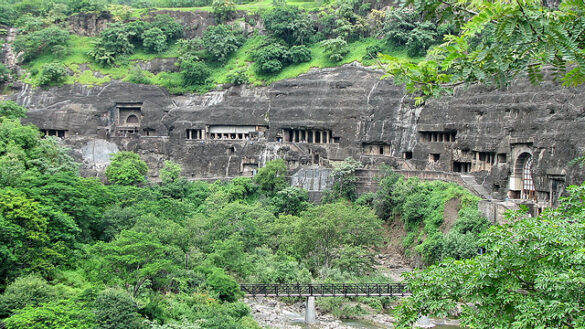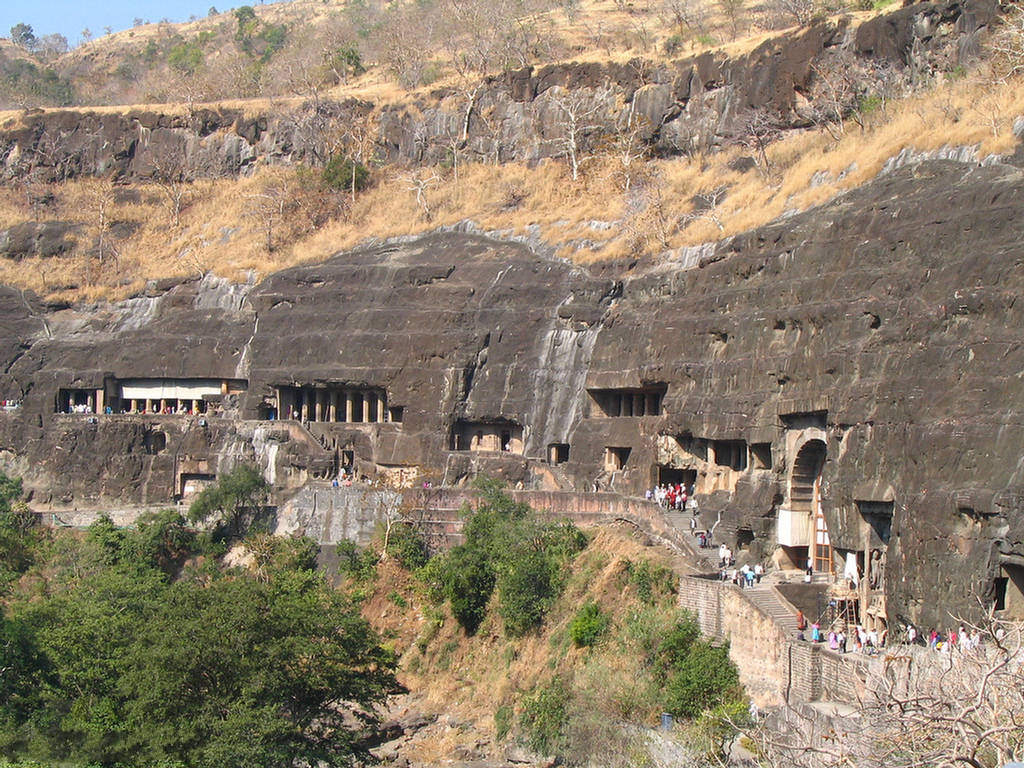
One of the destinations of the Maharajas’ Express, an Indian luxury train, is the Ajanta Daves. These caves are located around 99 kms away from Aurangabad, in Maharashtra, a West Indian state.
This handcrafted treasure of the country consists of statues of Lord Buddha, several kinds of paintings, various kinds of sculptures and much more. In the year 1983, the Ajanta caves were declared a UNESCO World Heritage Site. Every attraction has a glimpse of Buddhism into it.
A Religious Connection:
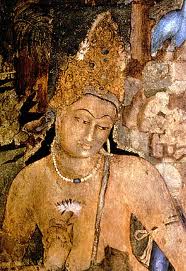
This sculpted piece of art is well-known for its magnificence, all around the world and thus, is visited by Indian as well as foreign tourists, every year.
It is actually not just a tourist attraction but a Buddhist religious site too. Each cave has its own importance and most of them are a depiction of the life of Buddha.
It is visited by monks and Buddhist followers in large numbers, as it is a perfect place to search for your inner soul. It is also a great example of the beauty of the nature. It is believed that most of the sculptures as well as paintings have been done by the Buddhist monks.
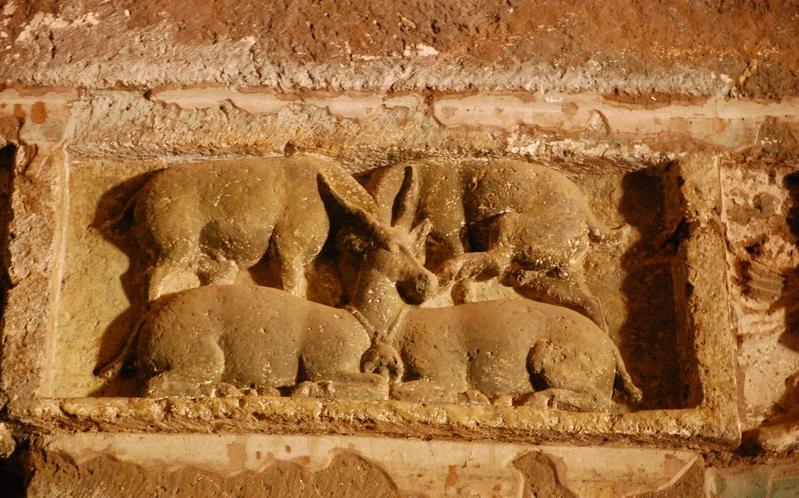
At different places in these caves, sculpted from huge rocks forming elegant architectural form, are paintings and carvings which clearly illustrate the life as well as the teachings of Lord Buddha.
The Ajanta caves were home to primarily scholars and students of Buddhism so that they could spread awareness about their religion. At many places there are images of humans and animals too, carved out of rocks.
The paintings take their inspiration from Gupta and post-Gupta times and various other tales such of Sravasti, the Jataka tales, the return of Lord Buddha to his home and so on.
One of the paintings, the Flying Apsara, in 1996 was the emblem of the World Beauty Pageant held in Bangalore.
Structure
These horseshoe-shaped hills are around 12 kms away from the Ajanta village, with the river Waghora, flowing below. The creation of these monastic caves might not have been an easy thing as workers had to dig into the Sahyadri hills for around 2 thousand years.
About 30 Ajanta caves were built in two stages, the first was around 2nd century BC and the second time was around 6th century BC.
Caves

Out of 30 caves, Cave 9, 10, 19, 26, 29 are Chaityagrihas while the others are Viharas. There is segregation of the caves, which has been done in two groups. The first belongs to the Hinayana phase of Buddhism where 5 caves including 9 and 10 are chaityagrihas and 8, 12, 13, 15A are viharas.
These caves can be dated back to the pre-Christian era, with cave 10 dating back from the 2nd century B.C. containing several stupas, the objects of worship with wooden construction.
Then, there were excavations during Vakatakas period. Varahadeva, a minister of Vakataka king Harishena dedicated cave 16 to the Buddhist Sangha while cave 17 was gifted to feudatory. Cave no 26, contains Rashtrakuta inscriptions used during 8th – 9th centuries A.D.
The second phase (started around 5th and 6th ) marks the arrival of new patterns and focal point of Buddha statues and paintings that are world-renowned.
Leftovers of paintings and sculptures containing ornaments and head gears are found in Caves 9 and 10, which are very much same to the sculptures of Sanchi and Bharhut.
Caves 1, 2, 16, 17 are its other examples. The decoration of the ceilings of the caves contain various geometrical and floral designs.
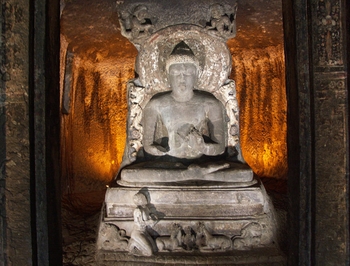
Along with the life of Lord Buddha, the paintings also depict the life, events and society of the same period.
General Information:
It is well-connected, both by road and by rail. The Ajanta caves are closed only on Mondays. Including the other days, they are also open on the national holidays. The timings for visit are from 9 a.m. to 17:30 p.m.


